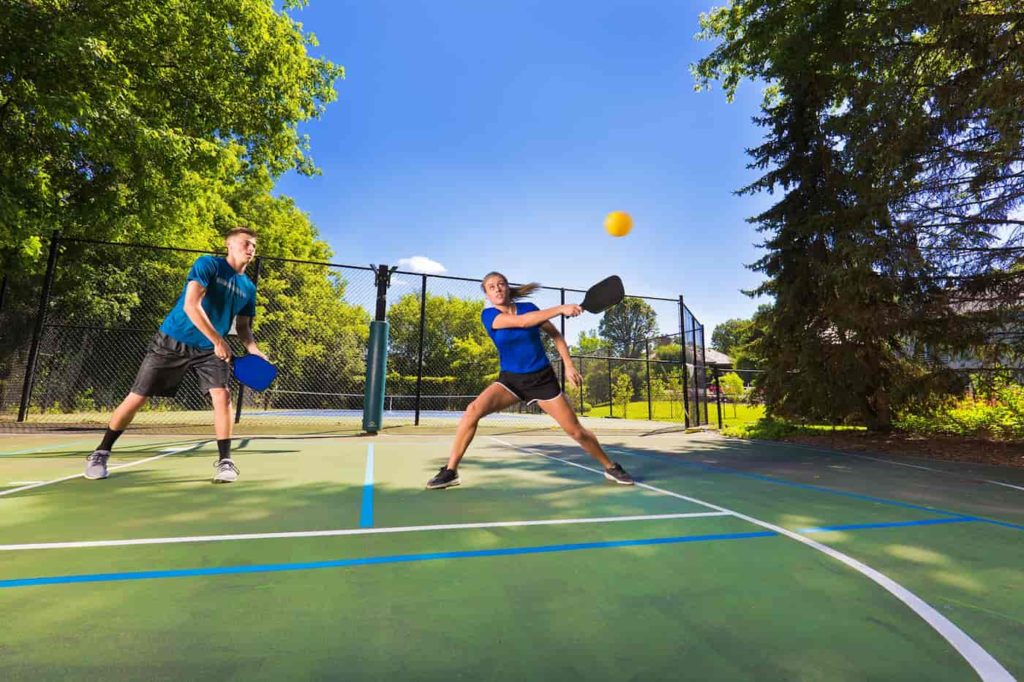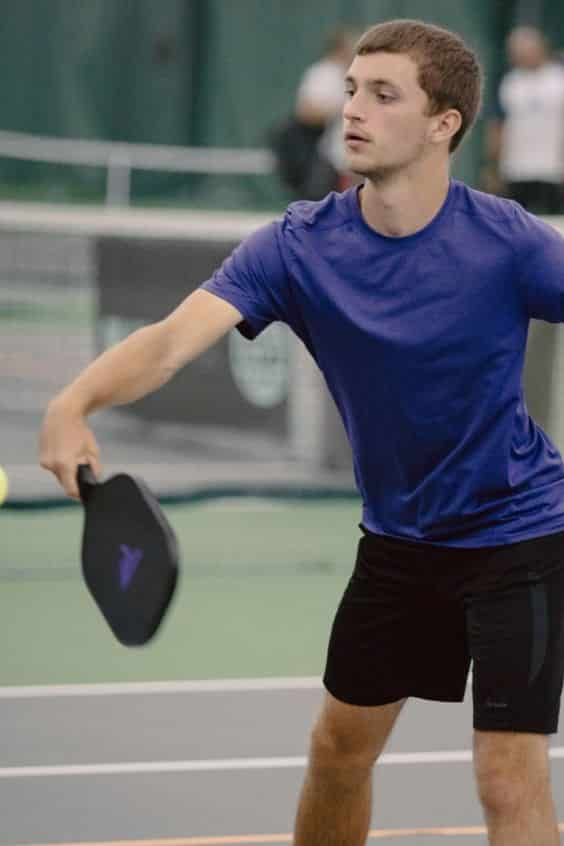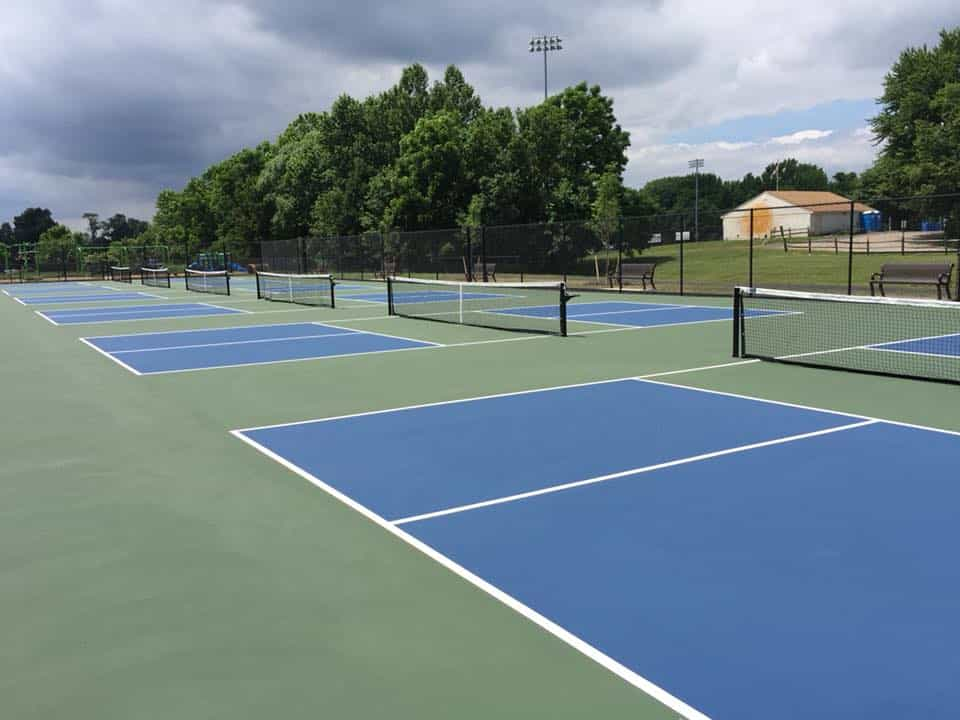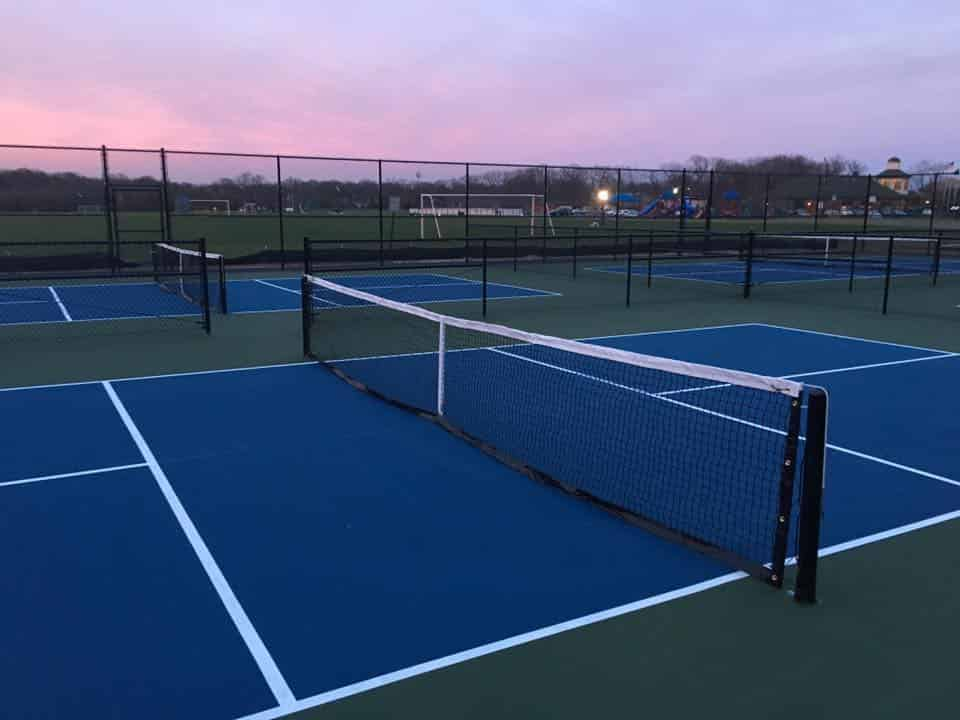Introduction
Pickleball is a game that combines the elements of tennis, badminton, and table tennis. It is a fast-paced game that can be enjoyed by people of all ages and skill levels.
Unlike other racquet sports, pickleball is played on a smaller court with a lower net, making it easier for beginners to learn. However, for advanced players, this means the game requires more precision and accuracy.
Why is Shot Selection Important?
Shot selection is an essential component of winning at pickleball. It involves analyzing your opponent’s positioning on the court, identifying their strengths and weaknesses, and assessing your own abilities and limitations while considering court conditions like wind or sun glare.
Making informed decisions about which shot to make based on these factors can give you a significant advantage over an opponent who doesn’t consider them when playing. Good shot selection also minimizes unforced errors that could cost you points unnecessarily.
Understanding how to make effective shot selections will help you become a more efficient player while opening up new opportunities for winning at pickleball regardless of your level of play. In this article’s following sections, we will go over the different nuances of shot selection, including niche subtopics such as serve placement strategies, dinking techniques, lobbing tactics, and smash shots, followed by rarely known small details on shot selection.
High-Level Overview of Shot Selection
Understanding the Court and Your Opponent's Positioning
The first step in effective shot selection is understanding the court layout and your opponent’s positioning. You need to be aware of where you are standing on the court, as well as where your opponent is standing.
Knowing how to position yourself on the court will help you execute shots better and improve your chances of winning. You also need to understand your opponent’s positioning.
This means recognizing their strengths and weaknesses, as well as their tendencies. Are they more comfortable at the net or in the backcourt?
Are they quick on their feet or slow? These factors will help you determine which shots are most likely to be effective against them.
Identifying Strengths and Weaknesses of Your Opponent
To identify your opponent’s strengths and weaknesses, pay close attention to their shot selection and technique during warm-up or early in a match. Consider what types of shots they seem most comfortable with, such as forehand or backhand shots, overheads, or drop shots. Also notice any areas where they may struggle, such as low balls or wide angles. Feel out what kind of player your opponent is in the warm up.
Once you have identified these strengths and weaknesses, use this information to tailor your shot selection during the match. For example, if your opponent struggles with low balls, focus on hitting more drop shots rather than deeper drives.
Analyzing Your Own Abilities and Limitations
Effective shot selection also requires an honest assessment of your own abilities and limitations. This means recognizing what types of shots you are most comfortable with and which ones may be more challenging for you.
Consider factors such as footwork ability, reaction time, strength, speed, agility, etc., when analyzing yourself. With this knowledge in mind during a match, assess each situation carefully before settling on one approach over another.
Understanding the court and positioning of your opponent is critical to effective shot selection. Identifying your opponent’s strengths and weaknesses will help you determine which shots are most likely to be effective, while analyzing your own abilities will ensure that you choose shots that suit your skills and improve your chances of success.
Serve Placement Strategies
The serve in pickleball is a crucial shot as it starts the point and can set the tone for the rest of the game. Serve placement strategies vary depending on your opponent and can greatly improve your chances of winning.
One strategy is to aim for the backhand side of your opponent, as most players have a weaker backhand. Another is to serve deep into the court, forcing your opponent to hit a high return that you can easily attack with a smash shot.
A final strategy is to mix up your serves by using different speeds and spins. This keeps your opponent guessing and off-balance, giving you an advantage in controlling the tempo of the game. The last thing you should do is hit the same serve every time, your opponent will know exactly where it’s going and immediately have the upper hand.
Dinking Techniques
Dinking involves hitting soft shots over the net that land gently in front of your opponents, forcing them to move forward and limiting their ability to attack. Dinking techniques are important as they allow you to control play while conserving energy during longer rallies.
One technique involves using an open paddle face when hitting dinks, which creates backspin and causes balls to drop more quickly after crossing over the net. Another technique is to use a wrist flick motion when hitting dinks, which allows you to change direction quickly and keep opponents off balance.
A third technique involves varying speeds when hitting dinks, making it difficult for your opponents to anticipate where each shot will land. This can be done by adding more or less power behind each hit or changing up spin.
Lobbing Tactics
Lobbing in pickleball involves hitting high arcing shots over your opponents’ heads that land deep in their court, giving you time to recover and regain control of the point. Lobbing tactics are important as they allow you to turn a defensive situation into an offensive one.
One tactic is to use a lob as a surprise shot, catching your opponents off guard when they may be expecting a faster or flatter hit. Another tactic is to aim for the weaker side of your opponent, making it harder for them to return the lob effectively.
Another effective lob strategy is to aim for the centerline of the court, causing confusion between opponents on who will take responsibility for returning it. This can result in either player hesitating or both going for it, allowing you to gain control of the point.
A final tactic involves using lobs strategically throughout the game, rather than relying on them too heavily. This allows you to mix up your shots and keep opponents guessing, while still conserving energy during longer rallies.
Smash Shots
The smash shot in pickleball is an aggressive overhead shot that can be used to end points quickly or put pressure on opponents. Smash shots are important as they allow you to capitalize on weaker shots from your opponent or put away high balls that may be difficult to return.
One technique involves jumping when hitting smash shots, allowing you to generate more power and angle. Another technique is to aim for the middle of your opponents’ court when hitting smash shots, making it harder for them to defend both sides effectively.
A third technique involves anticipating high balls and moving quickly into position under them before hitting a smash shot. This requires good footwork and timing but can result in easy points if executed correctly. A final technique is using the angle instead of just power. Pushing your opponent off the court with an angled smash is a great way to put yourself in a winning situation.
Incorporating all these subtopics into your gameplay will improve both shot selection and execution during matches. While these techniques might take some practice and patience, by consistently practicing and implementing them in games players will see improvement over time.
The Small Details that Make a Big Difference
Importance of Footwork in Executing Shots
When it comes to pickleball, having good footwork can make all the difference. In order to execute a shot properly, you need to be in the right position and have proper balance.
This requires quick movements and changes of direction, which can be difficult without proper footwork. To improve your footwork, start by practicing your movement on the court.
Focus on keeping your feet moving and staying light on your toes. You can try jumping rope or simply pretend you’re a boxer staying on your toes ready for the next punch. You should also work on improving your lateral movement so that you can quickly move from side to side as needed.
Additionally, it is important to pay attention to where you are standing on the court when executing shots. If you are too far forward or too far back, it will affect your balance and make it difficult for you to execute the shot properly. Don’t get stuck in no man’s land, claim a court position and make it yours.
Utilizing Spin to Control the Ball Movement
Spin is an essential part of pickleball and can be used to control the ball’s movement in various ways. There are two main types of spin: topspin and backspin.
Topspin is used when hitting a ball with an upward motion, causing it to spin forward when it lands. This type of spin is useful for controlling longer shots and adding pace to your shots. It will also make the ball jump after it hits the ground, pushing your opponent back. Backspin is used when hitting a ball with a downward motion, causing it to spin backward when it lands. This type of spin is useful for controlling shorter shots near the net and making it more difficult for opponents’ return shots. It also keeps the ball low to the ground, forcing your opponent to get down. To utilize these techniques effectively, practice hitting different types of spins during drills or matches until they become natural movements that you can use instinctively during games.
Adjusting Grip Based on Shot Type
Grip adjustment is another small detail that can have a big impact on shot selection in pickleball. Depending on the type of shot you are making, you may need to adjust your grip slightly to improve accuracy or generate more power.
For example, when hitting a forehand shot with topspin, you may want to adjust your grip so that the base knuckle of your index finger is positioned slightly lower on the paddle handle. This will allow you to generate more topspin and control the ball better.
On the other hand, when hitting a backhand shot with backspin, you may want to adjust your grip so that the base knuckle of your pinky finger is positioned lower on the handle. This will allow you to create more spin and generate greater control over your shot.
Overall, adjusting your grip based on the type of shot is a small detail that can make a big difference in pickleball. Practice adjusting your grip during drills or matches until it becomes second nature.
Conclusion
Consistent Training Can Boost Your Shot Selection
Mastering shot selection in pickleball is a constant process that requires patience, persistence, and consistency. By regularly practicing the different shots and techniques outlined in this article, you can improve your decision-making skills during games.
Set aside time to train regularly, whether alone or with a partner, to fine-tune your shot selection abilities. In addition to physical training, it’s also essential to keep learning through online resources or attending clinics and coaching sessions.
Seek feedback from experienced players who can help you identify areas of improvement. With dedicated practice and learning opportunities, your shot selection can become more strategic and consistent over time.
Shot Selection Can Transform Your Pickleball Game
Using the right shots at the right times can make a significant impact on your game performance in pickleball. By mastering different techniques like serve placement strategies, dinking techniques, lobbing tactics and smash shots, you will be able to control your ball movement better while taking advantage of weaknesses in your opponent’s play style. Learning how to adjust your grip based on the type of shot or utilizing spin also significantly contributes to developing good shot selection habits.
Good footwork is vital as it helps with executing shots quickly while giving you an edge over opponents who may have limited mobility on the court. Ultimately by mastering these skills through dedicated training, learning from others’ experiences and regular practice will boost your confidence level when playing which adds up significantly in improving performance.
A Winning Mindset Requires Strategic Thinking
While mastering pickleball shot selection is vital for success on the court – it’s not just about hitting shots blindly or randomly hoping for good results. Instead, a winning mindset involves strategic thinking which takes into consideration your opponent’s positioning, their strengths and weaknesses as well as your own abilities and limitations. Awareness of these key factors can help you make better decisions during the game, allowing you to execute more successful shots while minimizing unforced errors.
When it comes to pickleball shot selection, a winning mindset means always staying focused on the present moment with a clear mind open to new possibilities. When this approach is embraced, success both on and off the court is within reach!





